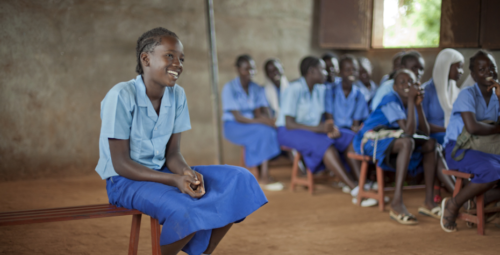

Introduction
Education has evolved drastically over time. Humanity began storing and transmitting knowledge through word of mouth, passing down information about animals, plants and the land to each succeeding generation. Formal education is said to have begun in Greece at around 4 BCE. In fact, the word “school” comes from the Greek word “schole”, which means “leisure”. This provides insight into how education was perceived back then; as an enjoyable activity rather than a chore. Today, the likes of Elon Musk have criticised formal education, deeming college degrees as a means of “prove(ing) that you can do your chores, but they’re not for learning” (Aratani, 2020). Educational tools have advanced. Wax tablets were amongst the earliest learning instruments used by the Romans. Today, digital tablets and an electric stylus fill our classrooms and have almost completely replaced pen and paper. Digital technology, comprising computers and the internet, represents the second main wave of disruptive technology since the printing press. Such technology has completely revolutionised the potential for learning and teaching in more engaging and accessible ways, paving the way for “leisurely learning” as the Greeks intended it to be. Journey with us as we travel through time to uncover the evolution of education and glimpse into the exciting future of pedagogy.
A Brief History of Education
As humankind settled down from nomadic life, our ancestors began to specialise. Rather than performing generalist roles, hunter-gatherers adapted to occupations that went beyond meeting food requirements (National Geographic Society, n.d.). To manage a society growing in complexity and scale, the Egyptians began a form of education similar to that observed in modern-day society, teaching typically wealthy, elite children mathematics, language and other subjects (Facts and Details, n.d.). This naturally transpired at a social centre rather than at home, though royalty may have received private tuition to prepare them for their roles in society. These early, rudimentary forms of education also served as a barrier to the lower classes. Only the elite would be granted access to the prestigious roles requiring education.
While schooling served a very functional purpose in Egypt, Greek education had a different aim. Maintaining traditional pathways for specialised careers, tutoring occurred individually, with students being provided with the care of a mentor (Zaphir, 2019). The consequence of this was Greek philosophy; thinkers used education to inform their values and principles to help them understand the world (Mark, 2020). For those able to join the ranks of thinkers, education served to advance the collective knowledge of Greece.

Source: Greek Philosophy Tours
Nonetheless, such advanced tutor-tutee forms of education were still reserved for the wealthy of Greece. Education for those fulfilling other societal roles would have been far more general and practical. So why was education made so much more available and abundant in the West? The answer lies in the advancement of human society. Occupations continued to grow more and more labour intensive. Biddulph (2004) notes that this trend led to children spending more and more time away from their families, going into life without the social structures that made them good citizens. The cynic viewed schooling as a way to repress the resulting rising crime rates, with education becoming developed to favour the interests of the church, the business owner, and the national leader. In particular, to keep children occupied on task, draconian measures like corporal punishment were transferred from the work children were once expected to do and on into schools (Gray, 2008). Nonetheless, idealists also supported education as a means of improving social mobility.
In Australia, post-settlement education was imported from the British schooling system. Education ostensibly served as a method to broaden opportunities for the public. At the time, however, it consisted of private imported British tutors for the wealthy and ex-Convict teachers for the poor or rural (Heffernan, 2021). Such rural schools were believed to be substandard compared to urban schools or tutoring.

Source: Australian Education Research Organisation
Over time, the Australian schooling system became more formalised. As it transitioned away from a fully privatised system, the government established a relationship with various churches to facilitate more modern schooling. The later creation of non-secular teaching divided education in Australia into two classes: public schools and private schools. This remains a contemporary issue of contention in Australia, with private, religiously affiliated schools remaining popular for their perceived more superb standard (Caldwell, 2010). Specifically, the inequality between rural and urban areas has carried on, with many perceived better quality private schools placed in urban areas. Concurrently, information gathered by Caldwell (2010) indicates how this may have exacerbated class divisions in education, with economic hardship anticipating lower-income families migrating to areas with lower educational opportunities to meet other basic necessities. Nonetheless, Heffernan (2021) depicts that schooling allowed the middle class in Australia to grow as students took advantage of different pathways that education can provide.
Issues in Present Day Education
Nowadays, education is perceived as a fundamental human right and a duty for governments to ensure access to basic education for all children regardless of background or financial well-being. Furthermore, global literacy rates have climbed steadily over the last two centuries (Roser, 2016). The international average length of schooling is now drastically higher than it was a hundred years ago as more students obtain their secondary and even tertiary education. Considering Australia, the nation’s education system is regarded as one of the finest in the world by many, with a comprehensive curriculum and highly qualified teachers catering equally for domestic and international students (Australian Education System, 2021). Indeed, it is the third-largest provider globally of education for international students.

Source: Medium
Although the above discussion portrays a relatively positive view of education both globally and locally, there are two sides to each coin, and the opposite is rather bleak. Often obscured behind the wealth-fueled curtain of thousands of students flocking to prestigious, expensive universities and private schools in first-world nations, the truth is that even today, education remains inaccessible to millions of children in less privileged parts of the world. More than 72 million children of primary education age are not in school whilst the staggering statistic of 759 million adults are illiterate (Right to Education, 2018). Their illiteracy also separates them from the awareness necessary to improve their living conditions or send their children to school so the future generation may improve theirs.
The most substantially affected regions in the world are Sub-Saharan Africa, Central and Eastern Asia, and the Pacific. With uneducated children, the additional problem of extreme poverty patterns perpetuates in families, causing stagnation and no hope of improvement unless drastic measures are taken (Hillman & Jenker, 2004). In Australia, too, regional inequities in educational rights have been discovered, with students in remote access or rural areas struggling to attain the same level of secondary school education as their peers in metropolitan areas (Jenkins, 2020). Moreover, a lack of education creates a repetitive and vicious cycle of being denied the most basic rights and conditions within a ruthless modern economy. Hence, these alarming statistics must be investigated further to distinguish causes, and policies must be examined to mitigate these issues.
Currently, the two main problems causing the widespread shortage of education are poverty and marginalisation. Poverty is a crippling hindrance to education because many emerging countries cannot grant the financial resources necessary to create schools, provide schooling materials or recruit and pay teachers’ wages (Right to Education, 2018). Similarly, another significant issue is the lack of political will in developing countries to fund education, perhaps due to corruption or other motives. Moreover, as schools in developing nations cannot pay or train teachers properly, any education students receive may often be inadequate or of poor quality because of poorly trained, underpaid teachers and overcrowded classrooms.
Furthermore, the marginalisation of students is very troubling, especially when it comes to gender inequality. The continually low statistics of female children receiving adequate education robs economies severely because education for girls renders striking social benefits. Notably, higher incomes, lower maternal and infant mortality rates and educated women also have more personal autonomy for decision-making. However, according to UNESCO, an estimated 130 million girls between the ages of 6 and 17 are currently out of school. Those from the poorest families are more likely to be out of the classroom than more affluent peers. Alarmingly, even in Australia, many indigenous girls from remote rural areas do not attend school; one reason is the shame and outdated social stigmas of acquiring pads/tampons and the lack of fundamental health education (Wahlquist, 2017). The lack of infrastructure, poverty, overcrowding and segregation also impact the education of aboriginal children, both girls and boys (Korff, 2021).


Source: Australian Institute of International Affairs
Additionally, more problems include irregular school safety, harsh disciplinary policies enacted on students who are black or from ethnic backgrounds and even the burgeoning distraction of technology on the learning experience (Major Issues in Education, 2021). In the wake of these rampant issues, there must be policies enacted by governments to mitigate these faults. Ideally, states should bear the cost of education, especially for children from poorer backgrounds. More affluent nations or institutions should provide economically challenged countries with funds and aid for this endeavour because it develops human capital. Communities must be made aware of the importance of educating girls and boys. In particular, awareness workshops and government programs must be catered to especially in rural areas to help uplift education for women. Moreover, minorities must not be neglected; states should pay attention to these regions as only equality in education will guarantee a sustainable future.
The Future of Education
Thankfully, with the onset of “edtech” (educational technology), the future of educational equality is looking optimistic and less location-dependent. Schools in third world countries are working around infrastructure constraints by leveraging free online Youtube videos, like that of Khan Academy. The African School of Excellence (ASE) is one such example and is building a reputation as one of the most affordable schools globally (Khan Academy Blog, 2011). For regions that lack a quality internet connection, wireless technology and offline apps are promoting accessibility (World Economic Forum, 2022). Furthermore, technology such as dictation software, text to speech, electronic magnifiers and even software that converts musical scores into braille has revolutionised the ease with which students with a disability can access education.
Additionally, edtech has made education more interactive. Augmented and virtual reality are adding gaming elements to text-book material. For example, “Virtuali–tee” is an app that enables users to learn about the human body by wearing a unique t-shirt which allows them to explore inside the body via an Augmented Reality app (World Economic Forum, 2022). Artificial Intelligence is making homework more interactive and providing virtual feedback, thereby tailoring material to suit the individual to work at their own pace. Finally, 3D printing is looking to further fuel the creative process and drive engagement in the classroom. Future scientists, mathematicians and engineers will be able to hold the actual model they built in their hands.
There is a general misconception that technology reduces face to face engagement between teachers and students. Nevertheless, edtech aims to do the complete opposite. The “flipped classroom model” utilises technology to ensure that passive learning is done at home via videos and other digital resources, while homework is done at school, with the teacher available to assist those who need it. Classroom time is also dedicated to hands-on activities and interactive, personalised learning and discussions. In one study, students reported a significant difference in their higher-order thinking skills and perception of the importance of the contribution of their teachers when learning through flipped classroom model (Polat & Karabatak, 2022).
Conclusion
The collective knowledge of humanity has always been transferred from one generation to the next. As education gradually formalised into the classroom, we instinctively recognise that the system’s biases and flaws were passed down alongside an increasingly standard curriculum. This has split the world into those privileged enough to effectively supply their students with high-quality teaching, and those who cannot afford or cannot do so for various reasons. The emergence of edtech offers the opportunity to provide a high-quality education for those who traditionally would not have been able to access it. While still a developing system that has yet to be formally integrated into a widespread fashion, edtech’s ability to overcome wealth gaps and even connectivity issues places it as the pathway opener education itself is intended to be.
Bibliography:
Aratani, L. (2020, March 10). Elon Musk says college is ‘basically for fun and not for learning’. The Guardian. https://www.theguardian.com/technology/2020/mar/10/elon-musk-college-for-fun-not-learning
Biddulph, S. (2004). Manhood. Vermilion.
Caldwell, B. J. (2010). Is Private Schooling Becoming the Preferred Model of School Choice in Australia? Journal of School Choice, 4(4). https://doi.org/10.1080/15582159.2010.526840
Economic Issues No. 33 – Educating Children in Poor Countries. (2004). International Monetary Fund. https://www.imf.org/external/pubs/ft/issues/issues33/
Facts and Details. (n.d.). Ancient Egyptian Education. Retrieved April 24, 2022. https://factsanddetails.com/world/cat56/sub404/item1929.html
FutureLearn. (2021, November 14). Explore: The Australian education system. FutureLearn. Retrieved April 28, 2022, from: https://www.futurelearn.com/info/futurelearn-international/australia-education-system
Gray, P. (2008). A Brief History of Education. Psychology Today. https://www.psychologytoday.com/au/blog/freedom-learn/200808/brief-history-education
Heffernan, T. (2021). The History of Education in Australia. Oxford Research Encyclopedia. https://doi.org/10.1093/acrefore/9780190264093.013.1459
Jenkins, S. (2020, November 12). Government must address barriers to education in rural and remote areas, inquiry finds. The Mandarin. https://www.themandarin.com.au/144887-barriers-to-education-in-rural-and-remote-areas/
Khan Academy Blog. (2011, December 13). Making education more accessible around the world. Khanacademy.org. https://blog.khanacademy.org/making-education-more-accessible-around-the-world/
Korff, J. C. S. (2021, August 19). Barriers to Aboriginal education. Creative Spirits. https://www.creativespirits.info/aboriginalculture/education/barriers-to-aboriginal-education
Mark, J. J. (2020). Greek Philosophy. https://www.worldhistory.org/Greek_Philosophy/
National Geographic Society. (n.d.). Civilisations. Retrieved April 24, 2022. https://www.nationalgeographic.org/encyclopedia/civilizations/
Polat, H., & Karabatak, S. (2022). Effect of flipped classroom model on academic achievement, academic satisfaction and general belongingness. Learning Environments Research, 25(1), 159–182.
Publisher. (2021, November 11). Major Issues in Education: 20 Hot Topics (Covering Every Level). Trade-Schools.Net. https://www.trade-schools.net/articles/issues-in-education
Right to Education : Situation around the world. (2018, February 22). Humanium. https://www.humanium.org/en/right-to-education/#:%7E:text=Today%2C%20education%20remains%20an%20inaccessible,and%20those%20of%20their%20children.
Roser, M. (2016, August 31). Global Education. Our World in Data. https://ourworldindata.org/global-education
Wahlquist, C. (2017, September 20). Indigenous girls in remote areas skip school because they lack pads and tampons. The Guardian. https://www.theguardian.com/australia-news/2017/jul/03/indigenous-girls-in-remote-areas-skip-school-because-they-lack-pads-and-tampons
World Economic Forum. (2022, May 3). Education technologies are making learning more accessible. https://www.weforum.org/agenda/2021/01/education-technology-accessibility-learning/#:~:text=AR%2C%20VR%20and%20AI%20technologies
Zaphir, L. (2019). What’s the point of education? It’s no longer just about getting a job. The Conversation. https://theconversation.com/whats-the-point-of-education-its-no-longer-just-about-getting-a-job-117897#:~:text=For%20much%20of%20human%20history,forced%20to%20change%20with%20it.
The CAINZ Digest is published by CAINZ, a student society affiliated with the Faculty of Business at the University of Melbourne. Opinions published are not necessarily those of the publishers, printers or editors. CAINZ and the University of Melbourne do not accept any responsibility for the accuracy of information contained in the publication.